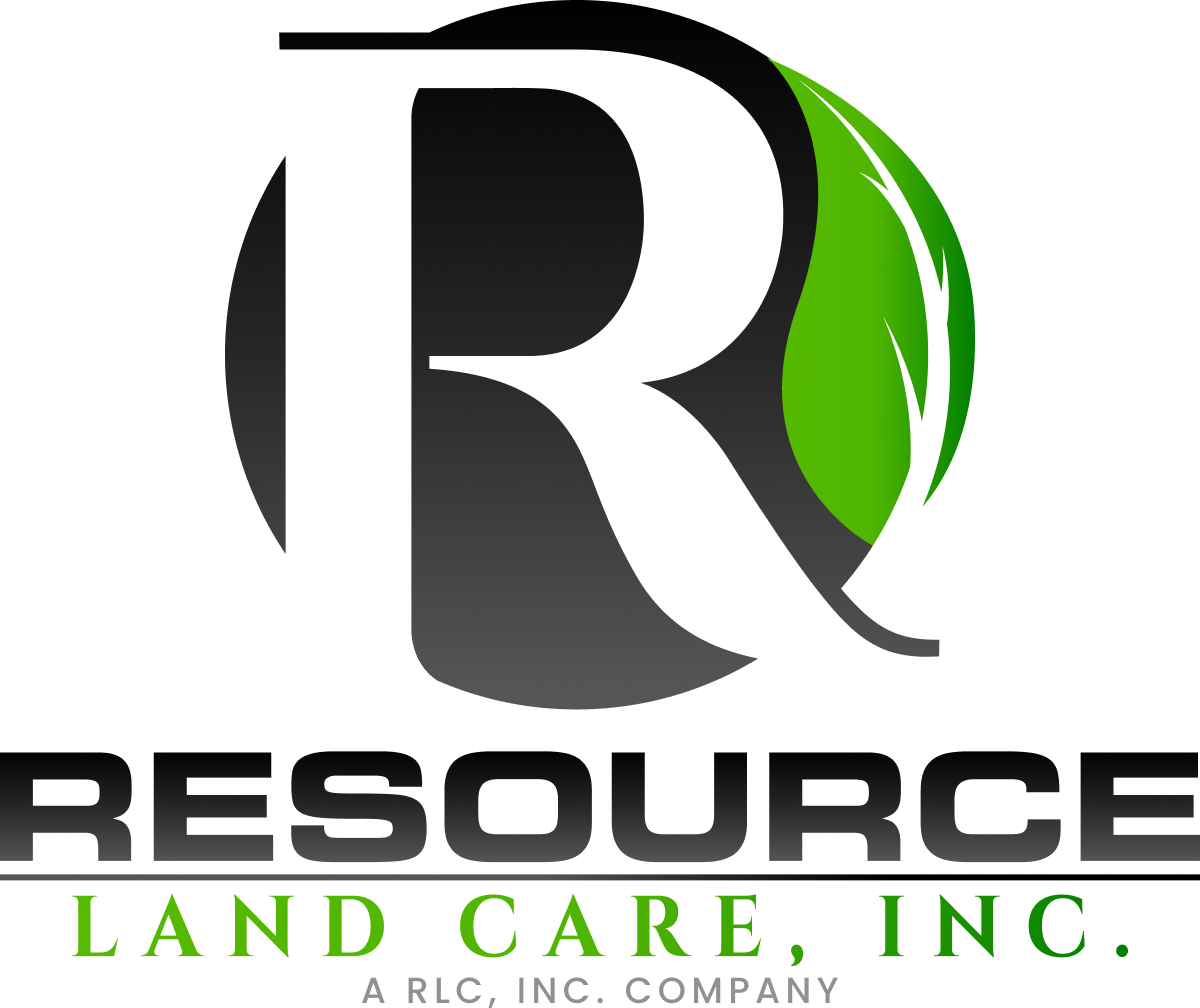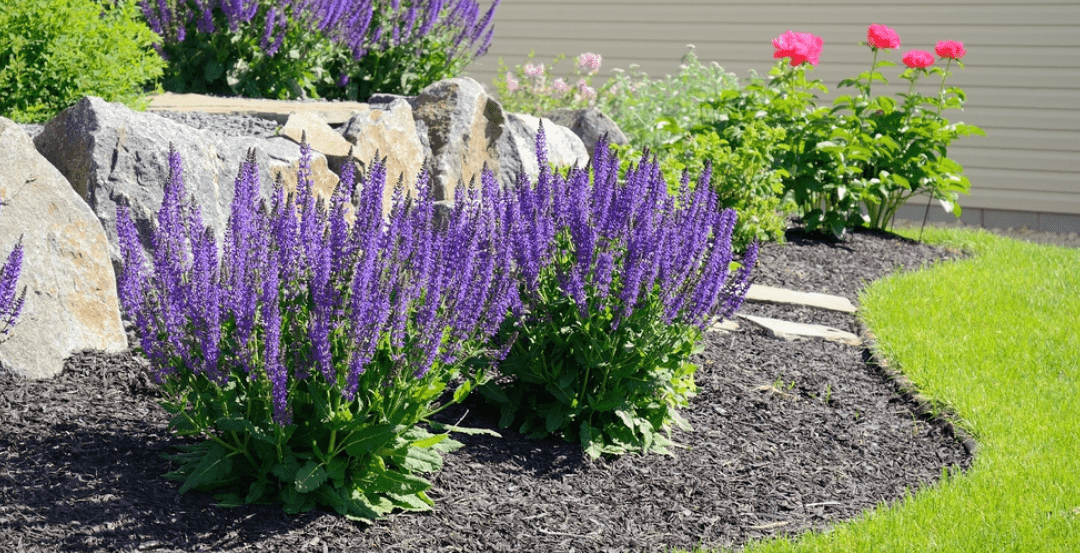Here at Resource Landscape, we are ready to spread (No pun intended!) the best mulching tips to the great people of Ontario, Chino Hills, Corona, Riverside, La Verne, and Rancho Cucamonga.
Why is mulching so important?
Mulch is the quickest way to accent your property and create a healthy environment for your trees and plants to grow. It immediately gives a finished look and adds to the curb appeal. Any California gardener knows that mulching can make or break the appearance of your yard.
When spreading mulch in landscaping, you create a healthy atmosphere for soil to get the nutrients it needs to flourish. Mulch acts as a blanket over the ground and insulates it from the different elements of weather. It helps to reduce water loss and the erosion of the soil. With mulch giving the ground that extra layer of protection, it helps keep the soil temperature balanced.
Anyone who lives in California knows that with those hot summer days comes the drought season. Having areas mulched during this time is a great way to slow down water evaporation and retain the soil’s moisture. It gives shade to the soil and can keep it cooler.
Did you know you can save hours of picking weeds if you apply the right amount of mulch? When weeds seeds have too much light, they start to germinate. When you block the sunlight with mulch, it immediately stops them from growing. Of course, we know there may be an occasional weed that will pop up, but having the area mulched will make it easier to remove the weed as the root will be less entrenched.
Tips on choosing the right mulch
Mulch comes in two different categories organic and inorganic.
- Organic mulch comes directly from plant material. It can be wood, leaves, or bark. To keep your soil healthy, it should consist of approximately 30% of organic matter. By using organic mulch, it will over time breakdown and add nutrients and keep the ground healthy.
- Inorganic mulch is from non-living material like rubber or cardboard. It can consist of rocks, pebbles, or rubber. The disadvantage of inorganic mulch is that it does not decompose or add any nutrients to the soil. However, it does work well to suppress weeds.
Our experienced team has worked with organic and inorganic mulch over the years, so we thought we would share a few tips to help you choose.
- Chipped bark, wood chips, and shredded bark are all excellent choices for organic mulch. They all work well with native trees and shrubs. The shredded bark is also a perfect choice for hills and slopes as the material is more durable and stays in place.
- Straw is a gardener’s friend as it shows excellent results in a vegetable garden. It does a great job of decomposing into the soil but may need to replace more often as it tends to fly away.
- Pine needles seem to be a good choice for forest-type trees. Although they give acid-loving plants a boost, they are very flammable.
- Rubber mulch isn’t the best choice for that California sun, as it does create an odor when it gets too hot. It is a very durable material that works great for a walkway or play area. A disadvantage of rubber mulch is that it creates a toxic breakdown that can damage trees and plants. Rubber mulch is something you want to think about carefully before using it near any of your landscaping.
- Pea gravel, lava rock, and pebbles are all wonderful ways to accent areas that are strictly decorative in your yard. It’s best if you don’t use rocks around any plant life as they may increase the soil’s temperature and cause damage.
How much mulch should I apply to my landscaping?
The best way to prepare an area to be mulched is to make sure you have cleaned out all the weeds and have watered all the plants and trees.

You need to make sure the mulch is applied thick enough to keep the light away from the ground, but not too thick as it can cause diseases from getting into your plants and trees.
When you are ready to apply the mulch, determine the area you will be covering. If it has native plants and trees, then we recommend 2-4 inches of organic mulch. Fruit trees need 3-4 inches, whereas roses require approximately 2 inches.
One mistake we keep hearing about is what they call a mulch volcano. A mulch volcano occurs when 1-2 feet of mulch gets piled around a plant or tree base. In turn, it creates a place for fungi and rodents to find a home which will slowly take away the oxygen from the tree. A good rule to remember is always to keep at least 3 inches away from the tree’s base to keep it flourishing for years to come.
What are the disadvantages of using mulch?
Mulch tends to take the brunt of all weather conditions. If you ever experienced Santa Ana winds, you know half of your mulch can be gone in the blink of an eye. Organic mulch also decomposes over time which causes it to become thin and allows weeds to visit your yard. All of these things add up to having to replace organic mulch every few years. It can become costly, so you may want to consider using stone wherever possible in your yard.
Unfortunately, living in California brings concern about how quickly fires spread and what we can do to stay safe. You may want to consider keeping organic mulch 5 feet away from your home if you live in an area that is prone to wildfires. This simple step can help to keep you and your family safe.
Best Mulch Tip of the Day
Let our experienced team handle mulching your yard! Why not give yourself the gift of time and sit back and let us bring our superior lawn maintenance, landscaping, or irrigation services right to your door!
 (208) 810-5060
(208) 810-5060
